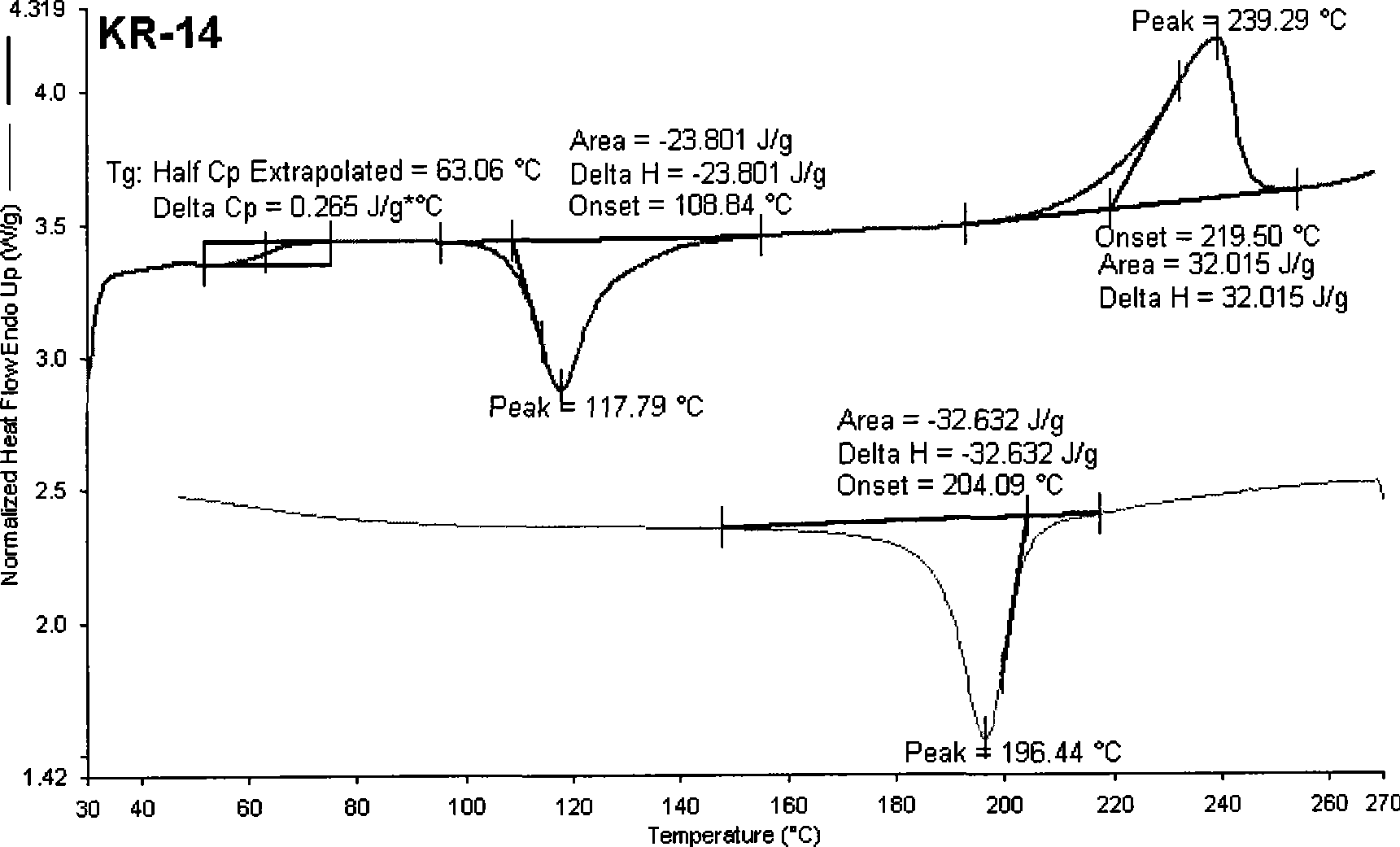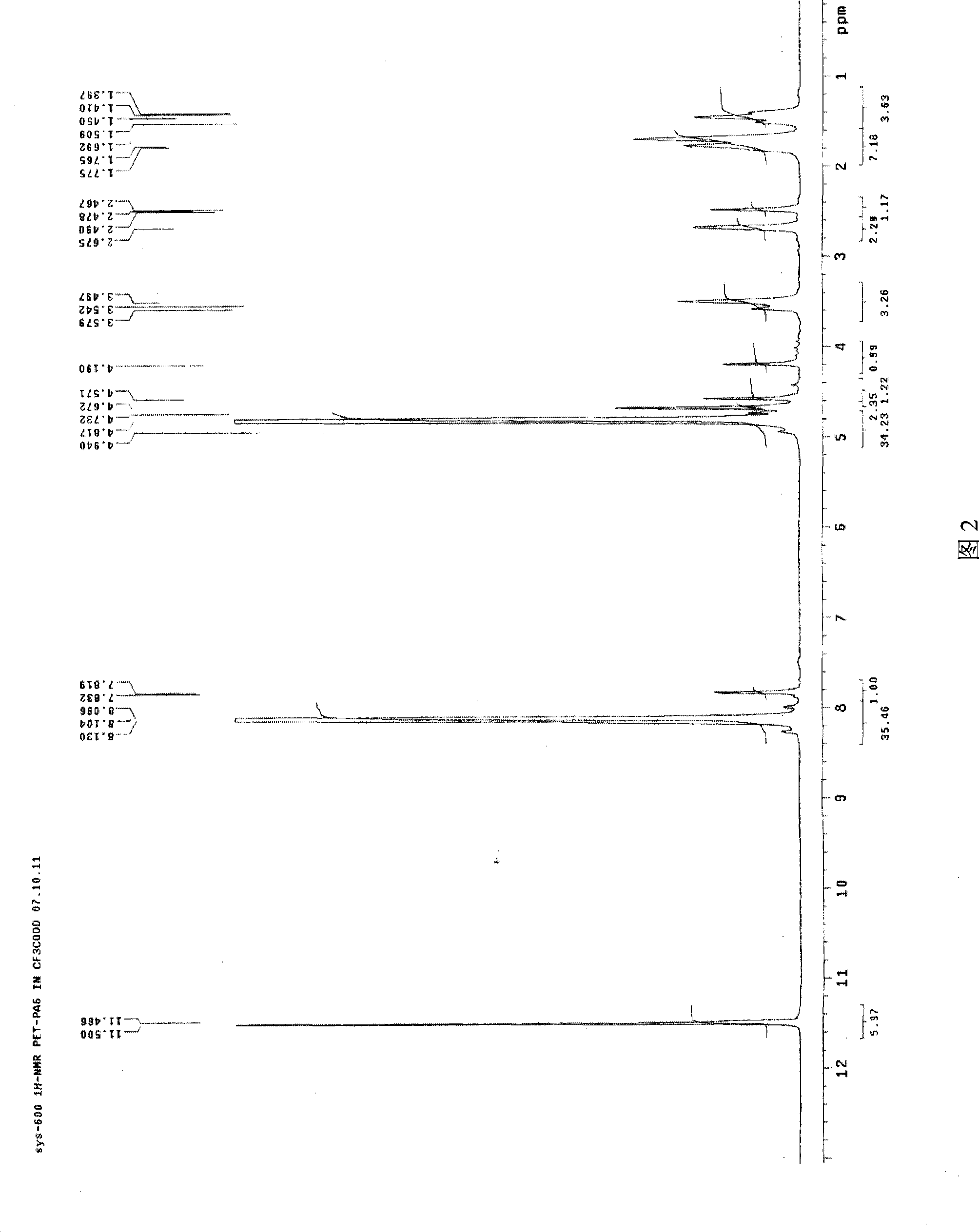Acidic dyeable polyester and method for preparing acidic dyeable polyester and fiber thereof
A polyester fiber and acidic technology, which is applied in the field of acid dyeable polyester chips and fiber preparation, can solve the problems of poor compatibility between polyamide and polyester, achieve uniform dyeing, improve polyester acid dyeing performance, and simple operation Effect
- Summary
- Abstract
- Description
- Claims
- Application Information
AI Technical Summary
Problems solved by technology
Method used
Image
Examples
Embodiment 1
[0040] Mix 800g of dimethyl terephthalate (DMT) with 546g of ethylene glycol and 0.27g of magnesium acetate evenly, then add it to the reaction kettle, raise the temperature to 200°C, and carry out the reaction for 30 minutes, when the fraction reaches 99% of the theoretical amount , to end the transesterification reaction. Transfer the product after the transesterification reaction to the polycondensation reactor, add 0.43g of antimony trioxide polycondensation catalyst and 115g of nylon 6 slices, then raise the temperature to 240°C, vacuumize to 70Pa, continue to heat up to 265°C, and carry out the reaction for 3 hours , when the intrinsic viscosity of the polyester in the kettle is 0.75dL / g, the material is discharged to prepare acid dyeable polyester chips with a melting point of 250-252°C, and the polyester contains 12% polyamide by weight. Vacuum-dry the above-mentioned acid dyeable polyester chips at 80°C for 4 hours and at 130°C for 8 hours to make the moisture content...
Embodiment 2
[0042] Mix 800g of dimethyl terephthalate (DMT) with 468g of ethylene glycol and 0.22g of manganese acetate, then add it into the reaction kettle, raise the temperature to 170°C, and carry out the reaction for 60 minutes, when the fraction reaches 98% of the theoretical amount , to end the transesterification reaction. Transfer the product after the transesterification reaction to the polycondensation reactor, add 0.4g of antimony trioxide polycondensation catalyst and 68g of nylon 66 slices, then raise the temperature to 245°C, vacuumize to 50Pa, continue to heat up to 260°C, and carry out the reaction for 4 hours , when the intrinsic viscosity of the polyester in the kettle is 0.72dL / g, the material is discharged to prepare acid dyeable polyester chips with a melting point of 250-252°C, and the polyester contains 5% polyamide by weight. Vacuum-dry the above-mentioned acid dyeable polyester chips at 80°C for 4 hours and at 130°C for 8 hours to make the moisture content reach ...
Embodiment 3
[0044] 1000g of terephthalic acid (PTA) and 830g of ethylene glycol were mixed evenly and added to the reactor, the temperature was raised to 260°C, and the reaction was carried out for 50 minutes. When the fraction reached 98% of the theoretical amount, the esterification reaction was terminated. The product after the esterification reaction was transferred to a polycondensation reaction kettle, and 0.68 g of antimony trioxide and 460 g of nylon 6 slices were added, vacuumed to 60 Pa, continued to heat up to 260 ° C, and reacted for 2 hours. The intrinsic viscosity of the polyester in the kettle was After 0.78dL / g, the material is discharged to prepare acid-dyeable polyester chips with a melting point of 250-252° C., and the polyester contains 20% polyamide by mass. . Vacuum-dry the prepared acid dyeable polyester chips at 80°C for 4 hours and at 125°C for 8 hours to make the moisture content reach 50-100ppm. / min, the draw ratio is 2.5, and the hot roll temperature is 160°C...
PUM
 Login to View More
Login to View More Abstract
Description
Claims
Application Information
 Login to View More
Login to View More - R&D
- Intellectual Property
- Life Sciences
- Materials
- Tech Scout
- Unparalleled Data Quality
- Higher Quality Content
- 60% Fewer Hallucinations
Browse by: Latest US Patents, China's latest patents, Technical Efficacy Thesaurus, Application Domain, Technology Topic, Popular Technical Reports.
© 2025 PatSnap. All rights reserved.Legal|Privacy policy|Modern Slavery Act Transparency Statement|Sitemap|About US| Contact US: help@patsnap.com



